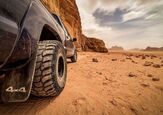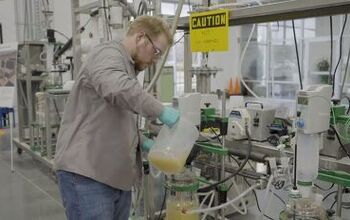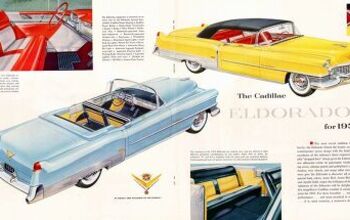Elon Musk's Future Vision: Your Tesla Gets a Day Job, and Why That Might Not Be a Good Idea

In his Master Plan, Part Deux, some of Tesla CEO Elon Musk’s visions make a lot of sense, like a compact SUV based on the Model 3 platform, and a pickup truck, which will presumably have more than enough torque to haul around a big load (and plenty of space for a big battery pack).
That’s not at all what I want to talk about. Instead, I want to talk about some of the more speculative parts of the Musk vision: the self-driving vision. ( I first wrote about some of the dystopian aspects of self-driving cars for TTAC in 2010.)
Musk wants you, the owner of a Tesla, to click a button and have your self-driving car go off and Uber itself during the day while you’re at work, earning you money. It will come back to you at the end of the day, ready for you to use again. This vision is going to have a very harsh collision with reality.
Let’s assume you’re not the sort of person whose car is strewn with personal effects, so you’re not worried about your cars’ passengers stealing your things. Even then, you still have to worry about passengers who smell bad, vomit, or otherwise damage your car. Even if you’ve got good insurance to absorb the monetary damages, you’re now living without your car while it’s being repaired, no doubt availing yourself of the very car-sharing service in which your own car once participated.
My day job is conducting research in computer security, so I want to delve deeper into things that can go horribly wrong. It’s how my brain works. Bear with me on this.
Let’s say you’re interested in stealing cars. If you could click on an app and summon a car — which would arrive without a driver — then you’re a very happy camper. How might that work? First, you create a fresh account on a burner phone using a stolen credit card number. You travel to some abandoned warehouse district, then you summon the driverless car. When it arrives, you promptly box it in with other cars. The Tesla’s Autopilot will be far too polite to fight its way out, and now you’ve got the car trapped. Of course, you brought a flatbed tow-truck along, so you can hoist the car up and clamp it down.
Your next mission is to disable the radios so Tesla’s central command can’t track the car. Each car will have antennae hidden in different locations, so you’ll have to know what you’re doing, but all the cars of a given make and model have the same antenna package, so you know what to do before you head out to the chop shop. Easy.
Needless to say, Tesla will be keenly aware of your gambit and will keep around honeypot cars, loaded with extra radios and GPS trackers and such, so you think you’ve got it made, but they’re tracing you all the way home. This sort of back-and-forth one-upmanship is something that happens in a variety of security scenarios, and it’s wildly unclear who eventually wins the game.
Now consider a less futuristic, more presently plausible scenario: the self-valeting car. I don’t want somebody else polluting my precious bodily fluids by messing up my car, and that includes the evil valet parking attendants who set up orange cones to block me from using any of the perfectly reasonable parking spots at my favorite restaurants. Instead, my car can drop me off and go find its own parking spot. If we’re only a few miles from home, the car could just head home alone, open the garage, pull in, and chill. If we’re far away, Tesla could have an arrangement with a nearby pay lot. Sounds great, right? Well, all the same theft scenarios present themselves. You can imagine roving bands of car thieves, just looking for empty cars in motion. Block ‘em in and haul ‘em out.
When a group of researchers from UC San Diego and the University of Washington studied this in 2011, they conceived of a sophisticated thief who could remotely hack a car and issue it guidance commands, which was entirely feasible with the GM cars they happened to be looking at. ( GM didn’t fix this until 2015.) With that car, a remote high-tech thief could remotely unlock and start the car, but it would take a local human to drive it away. With the next-generation Tesla Autopilot, the local accomplice would no longer be necessary, nor might it raise eyebrows to see a car start itself up and drive away without anyone behind the wheel.
As before, we get into a game of one-upmanship, where Tesla must defend its fleet against creative attackers, and Tesla customers have to hope that Tesla will do a decent job of it. Tesla, in fact, seems to be doing a reasonable job of pushing regular software updates over the air to its cars, so it’s at least in a position to fight the good fight. But consider other car manufacturers. If we can’t trust Volkswagen to correctly meet U.S. diesel emission specs, can we trust them to actively defend their cars from electronic attacks, even a decade after they’ve left the showroom floor? What sort of requirements would it take to keep them vigilant?
It’s tempting to make this a regulatory function, but VW diesels passed their regulatory tests. As another example, electronic voting machines, with which I’ve been involved for 15 years, are all “certified” against voluminous standards by ostensibly independent third parties. Despite this, any security expert can drive a truck through the holes, and older machines are still widely used without any software updates for their known flaws. (If the election’s really close, I’ll be busy this November.)
My conclusion is that certification and testing are not going to cut it for truly autonomous, self-driving cars. We need something better, which leads to a somewhat surprising solution: Tesla and other automakers are going to be forced to move to in-house insurance companies. “Buy our car, and we warrant it against theft. No deductible.” This aligns all the incentives properly. You want to sell me a fully autonomous car, then warrant it against theft and other sorts of electronic attacks (e.g., an adversary might want to use Tesla’s online network to track your physical location).
This matters to any car owner, and it will really matter when Tesla gets into the autonomous 18-wheel tractor trailer business. When you’ve got a semi with potentially millions of dollars of inventory in back, it needs to resist tampering and theft long enough for a (non-autonomous) police car to be dispatched.
[Image: Tesla Motors]

More by Dan Wallach
Latest Car Reviews
Read moreLatest Product Reviews
Read moreRecent Comments
- Jeff JMII--If I did not get my Maverick my next choice was a Santa Cruz. They are different but then they are both compact pickups the only real compact pickups on the market. I am glad to hear that the Santa Cruz will have knobs and buttons on it for 2025 it would be good if they offered a hybrid as well. When I looked at both trucks it was less about brand loyalty and more about price, size, and features. I have owned 2 gm made trucks in the past and liked both but gm does not make a true compact truck and neither does Ram, Toyota, or Nissan. The Maverick was the only Ford product that I wanted. If I wanted a larger truck I would have kept either my 99 S-10 extended cab with a 2.2 I-4 5 speed or my 08 Isuzu I-370 4 x 4 with the 3.7 I-5, tow package, heated leather seats, and other niceties and it road like a luxury vehicle. I believe the demand is there for other manufacturers to make compact pickups. The proposed hybrid Toyota Stout would be a great truck. Subaru has experience making small trucks and they could make a very competitive compact truck and Subaru has a great all wheel drive system. Chevy has a great compact pickup offered in South America called the Montana which gm could be made in North America and offered in the US and Canada. Ram has a great little compact truck offered in South America as well.
- Groza George I don’t care about GM’s anything. They have not had anything of interest or of reasonable quality in a generation and now solely stay on business to provide UAW retirement while they slowly move production to Mexico.
- Arthur Dailey We have a lease coming due in October and no intention of buying the vehicle when the lease is up.Trying to decide on a replacement vehicle our preferences are the Maverick, Subaru Forester and Mazda CX-5 or CX-30.Unfortunately both the Maverick and Subaru are thin on the ground. Would prefer a Maverick with the hybrid, but the wife has 2 'must haves' those being heated seats and blind spot monitoring. That requires a factory order on the Maverick bringing Canadian price in the mid $40k range, and a delivery time of TBD. For the Subaru it looks like we would have to go up 2 trim levels to get those and that also puts it into the mid $40k range.Therefore are contemplating take another 2 or 3 year lease. Hoping that vehicle supply and prices stabilize and purchasing a hybrid or electric when that lease expires. By then we will both be retired, so that vehicle could be a 'forever car'. And an increased 'carbon tax' just kicked in this week in most of Canada. Prices are currently $1.72 per litre. Which according to my rough calculations is approximately $5.00 per gallon in US currency.Any recommendations would be welcomed.
- Eric Wait! They're moving? Mexico??!!
- GrumpyOldMan All modern road vehicles have tachometers in RPM X 1000. I've often wondered if that is a nanny-state regulation to prevent drivers from confusing it with the speedometer. If so, the Ford retro gauges would appear to be illegal.


































Comments
Join the conversation
The trucks problem has an easy solution. The autopilot drives, but you put a minimum wage armed security guard aboard to resist hijacking, for any loads with a value high enough for that to be a problem. The driver can't legally drive for more than 11 hours a day, I think, but the security guard just needs to wake up if the autopilot hijack alarm goes off, so he/she/they don't limit range or endurance.
I think it will happen. IIRC GM is testing driverless Bolts for Lyft -- you will have to opt-in to accept one, and for now there will be a human in the driver seat just in case. If conservative GM is down for it, the technology is there; Tesla is just thinking one step beyond, per usual. And I think it should happen. I dabbled in Uber driving during a big tourist event in my city. If I could make that money without actually doing anything myself, I surely would. Drivers and passengers are rated by each other on a 5-star scale, which should help weed out the slobs on both ends.